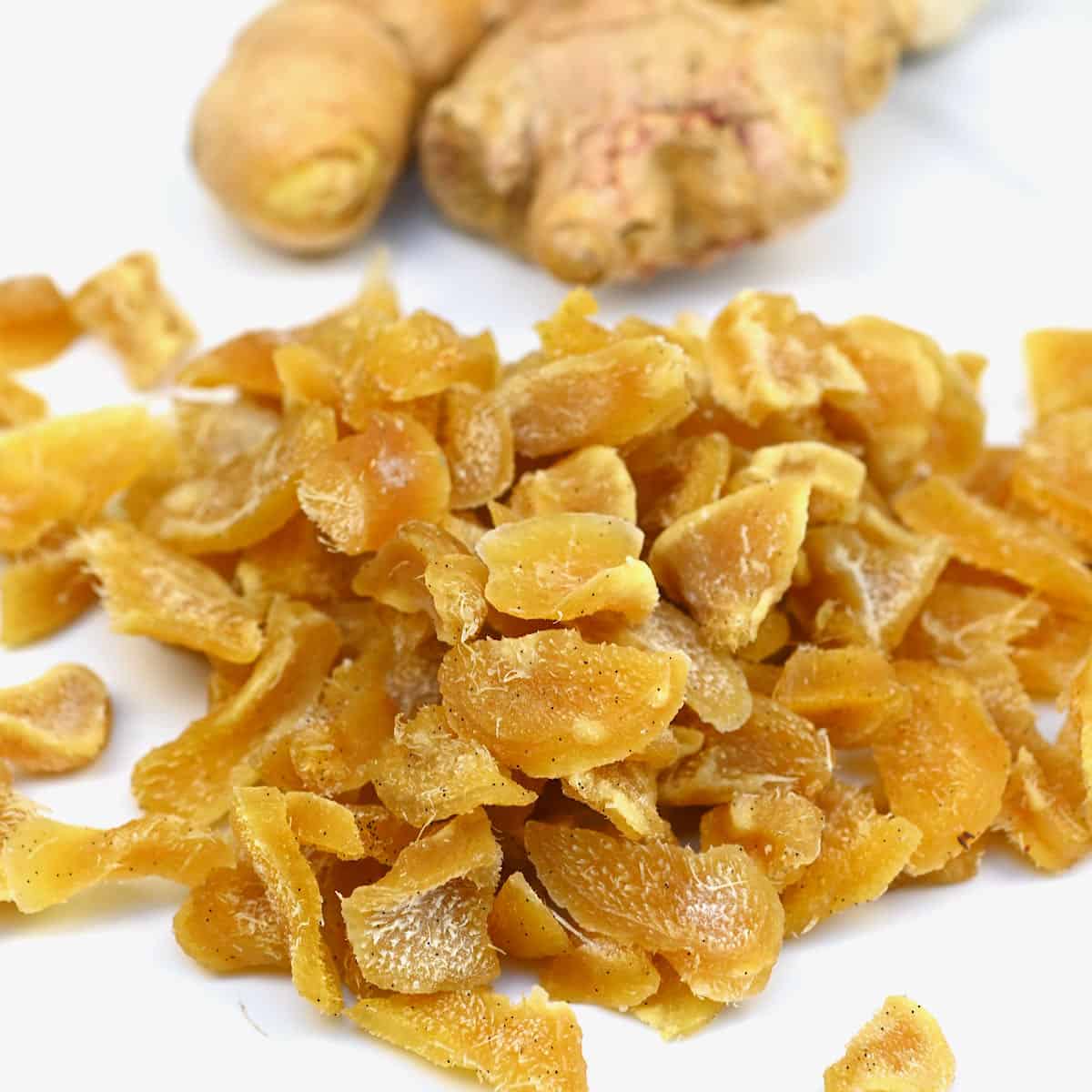How to Make Crystallized Ginger (Candied Ginger)
5.0
(8)
Your folders
Your folders
Prep Time: 10 minutes
Cook Time: 80 minutes
Total: 330 minutes
Servings: 48
Author : Samira

Ingredients
Export 3 ingredients for grocery delivery
Instructions
Step 1
Peel the ginger. I find this easiest with a spoon, following this method. You can even steep these skin pieces for a very light tea (if organic).
Step 2
Chop the ginger to your desired size - in cubes or in coins/strips. Keep in mind that the ginger will shrink during the process, so no need to make the pieces too small.If you want the pieces to be 100% even, you could use a mandolin to slice the ginger into coins/diagonal slices. The thinner you slice it, the more ‘crunchy’ rather than ‘chewy’ results you’ll have. I recommend around ⅛ inch (0.3 cm).
Step 3
Add all of the ginger to a large pot with enough water to cover the pieces entirely and the juice from ½ a lemon. I used about 8 cups/2 l of water but you might need a bit more or less depending on how big your pan is.
Step 4
Bring the mixture to a boil over medium-high heat, using a slotted spoon to remove the foam that settles on the top of the mixture.
Step 5
Cover the pan with a lid, reduce the heat to a gentle simmer, and cook for 30 minutes.Once ready, strain the ginger. There’s no need to get rid of the cooking liquid. This ginger water/juice will be full of flavor. I recommend saving it to either drink as a tea with a bit of honey/sugar or pour it into ice cube molds and use with lemonade and other drinks, smoothies, etc.
Step 6
Place the ginger back into the pot with the sugar, vanilla (slice the beans in half lengthwise and scrape all the seeds out into the pot), and remaining ½ lemon juice.
Step 7
Add the water to the pan. You can optionally use a little of the ginger water from before (about ½ cup). However, I tend to prefer it without this - as that liquid will be more bitter.
Step 8
Simmer the mixture over low heat for 35-45 minutes, stirring occasionally, until almost all of the water has evaporated and you are left with a syrupy mixture and the soft, sweet, and slightly chewy candied ginger pieces.You could now store the ginger in the syrup for simple candied ginger. However, for crystallized ginger, we now separate the two.
Step 9
During this stage, you can dry the ginger as is or lightly toss it with sugar first. To toss in sugar, I recommend allowing the pieces to dry for 1-2 hours first, so they aren’t super wet, just sticky.
Step 10
Lay the ginger pieces on a large parchment-lined tray in a single layer, if possible, to dry. The ginger can be air-dried or using an oven/dehydrator.To air-dry: place on a cooling rack and allow to dry out overnight. This is best done in areas with low humidity.To use an oven/dehydrator: dry at 150ºF/65ºC for about 4-5 hours, or until almost dry to the touch but still tender and chewy. The time will vary based on how big the candied ginger pieces are and the temperature/humidity, etc. If the oven temperature doesn’t go that low, then set it to the lowest setting and prop the door open just a cm or so (I use a heat-proof wooden spoon to do this).
Step 11
The candied/crystallized ginger can be stored in the syrup or dried and stored separately.Store: The shelf life of the crystallized ginger will depend on whether it’s coated in sugar (which extends the shelf life). When stored in an airtight container in a cool, dark location, sugar-coated ginger should last several months (around 3 months). In comparison, non-sugar-coated crystallized ginger is best stored in an airtight container in the fridge/freezer.Fridge: Candied ginger stored in its’ syrup will store for 6 months (up to a year, in some cases) in the refrigerator in a sterilized airtight jar/container. Crystallized sugar will last up to 6 months in the fridge in an airtight container (with or without sugar-coating, though sugared will last longer).Top tip: If you’re worried about the candied ginger mixture crystallizing, you can add a spoonful of glucose or corn syrup to the mixture in place of some of the sugar when boiling it.Freeze: You can also freeze the crystallized ginger for up to a year.